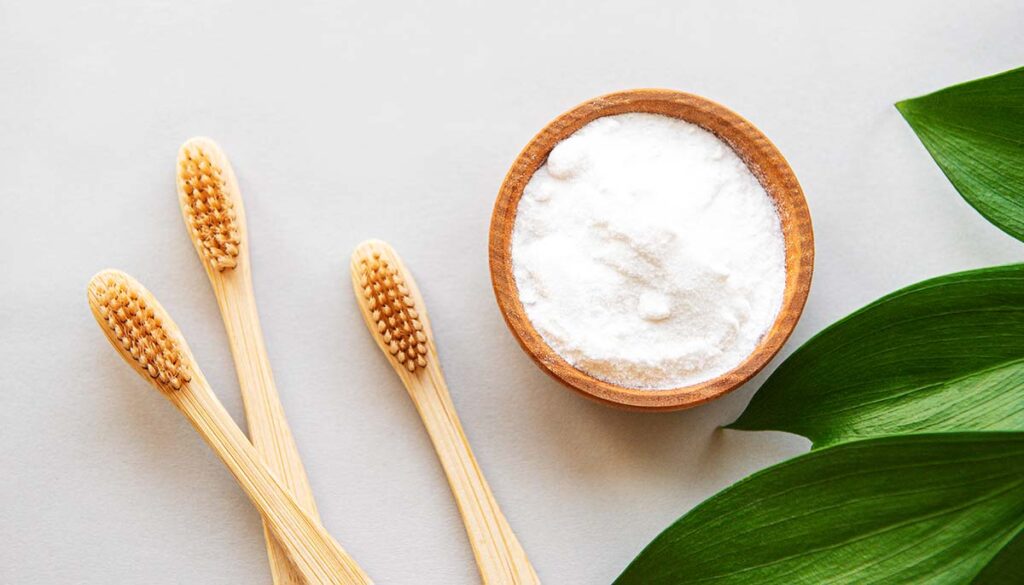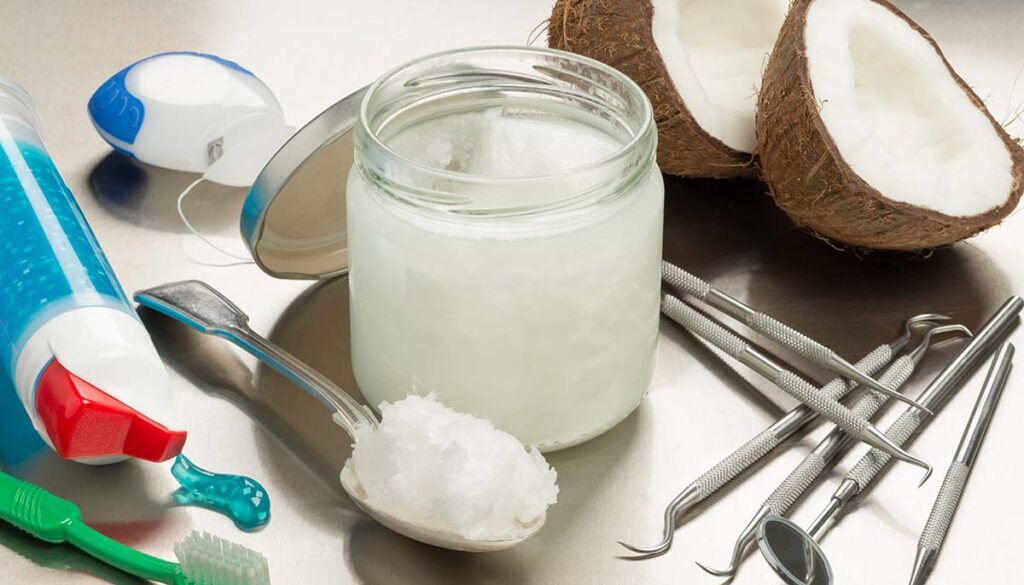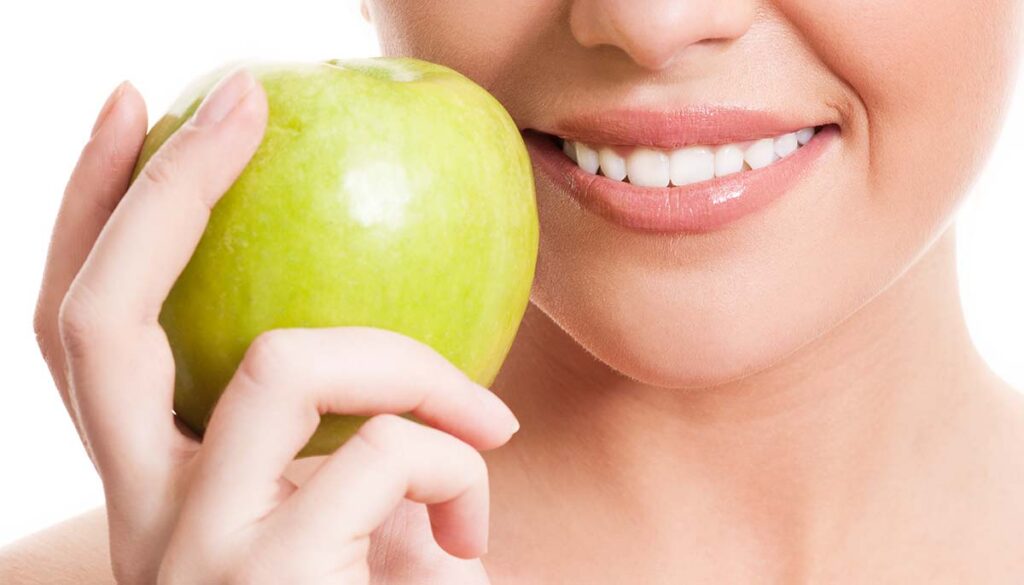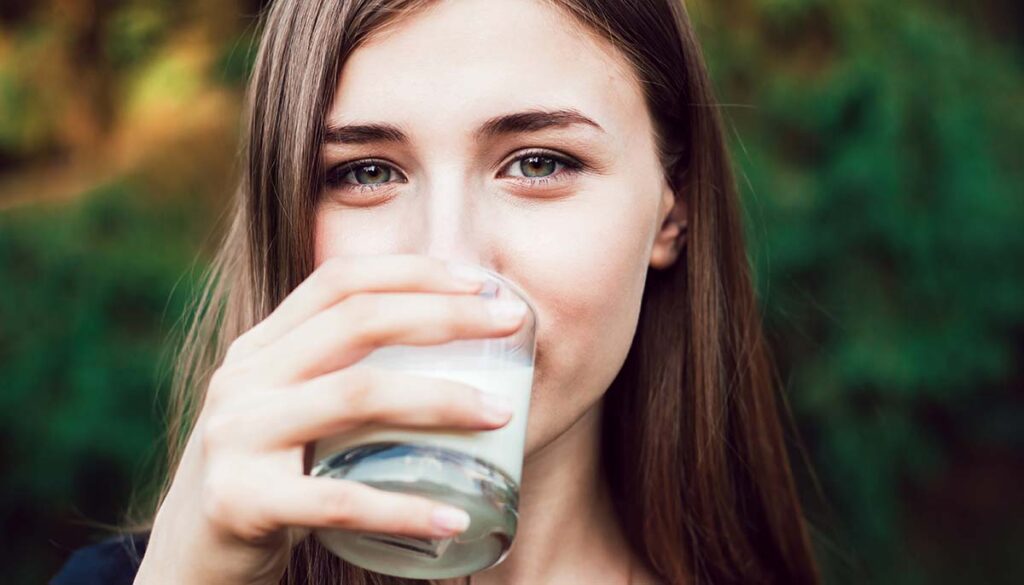Do you want whiter teeth? You’ve come to the right place. All over the internet, you’ll find countless products, all promising to deliver your whitest, brightest smile in no time. But the prices can be high and the reviews can be incredibly mixed.
Before you spend the big bucks for a set of ultra pearly whites, let’s put the tooth whitening back in your hands. DIY methods are not only more natural, but they can be significantly cheaper and surprisingly effective.
Of all the natural remedies out there, these seven continue to be the most beloved, natural ways to whiten teeth on a regular basis. How many have you tried?
Brush With Baking Soda
Baking soda is a wonder product when it comes to cleaning things in a gentle, natural way. Your teeth are no exception, but it can keep them looking exceptional.
Thanks to its mild abrasiveness, baking soda can scrub off some of the surface stains on teeth. It also has properties that help prevent bacteria from growing. For this reason, baking soda is also a popular replacement for mouthwash.
As noted by Healthline, “Baking soda has natural whitening properties and has been shown to be effective at removing stains on your teeth and whitening your smile.” Baking soda’s reliable tooth-cleaning skills are why you’ll find it an ingredient in so many kinds of toothpaste. But you can make your own paste at home.

Various studies have shown that baking soda-based mouthwash not only freshens your breath, but it may also “increase the pH levels of saliva, which is important for inhibiting bacterial growth,” per Healthline.
This is not a remedy that will whiten your teeth overnight, but you should notice a difference in the appearance of your teeth over time. Overall, science suggests that using baking soda is all-around good for your oral health, as it’s useful for reducing plaque and combatting gum inflammation. And it’s a long-standing go-to teeth whitener for good reason.
Here’s a DIY guide to making baking soda toothpaste, compliments of The Homemade Experiment.
Oil Pulling
Oil pulling is a traditional remedy worth trying. In recent years, oil pulling has gotten trendy, but it’s been around for a very long time. Originating in India, pulling is meant to improve overall oral hygiene and remove toxins from the body naturally.
The question is, can swishing coconut oil around in your mouth really remove the bacteria that turns into plaque and help your pearly whites become their whitest? Studies suggest it’s highly possible. Not to mention, those who swear by the method say that it definitely makes their teeth appear whiter, even if only for a little while.

According to the experts at Byrdie, “coconut oil on its own doesn’t whiten teeth. It can, however, make them appear temporarily brighter. With that in mind, if you’d still like to add coconut oil to your oral care routine, Patterson says that it’s fine to do so as long as you’re not allergic to the ingredient.”
Some research has shown that pulling once a day can reduce bacteria in the mouth while preventing gingivitis and the kind of plaque that leads to yellowing. However, there’s still no concrete scientific proof that oil pulling can really whiten your teeth. But because it’s safe and gentle, it couldn’t hurt to do some research yourself.
Once in a while, I partake in coconut oil pulling for its potential health benefits. And I must say, my mouth feels cleaner when I do. Sure, it could be wishful thinking, but I also feel like my teeth gleam more when I do it. And if you want to try it, just be sure not to spit it down the sink. After pulling for 10 minutes, be sure to spit the coconut oil out and into a trash can. Coconut will eventually resolidify and potentially clog your pipes.
Invest in Nature’s Toothbrush
It goes without saying that a diet high in fruits and vegetables is generally a good choice. But did you know that nature’s candy is also nature’s toothbrush? While you certainly should not throw out your regular toothbrush in exchange for it, raw fruits and veggies are great for your teeth. Eaten regularly, they can consistently rub off some of the plaque.
Strawberries and pineapple are frequently crowned the best fruits for whitening and buffing teeth. In my personal experience with this one, almost every time I’ve gotten a compliment on how white my teeth are looking, I’ve recently eaten an apple.

For instance, compounds like malic acid (found in strawberries and apples) have the power to remove surface discoloration. Also, bromelain, an enzyme found in pineapples, can remove tooth stains. Many say it whitens teeth best when made into a bromelain gel.
Still, to combat stains on a deeper level, you won’t be able to rely entirely on fruit and vegetables. For example, many say they’ve seen beaming results after making a fruity whitening paste.
Try mixing strawberries or pineapples with baking soda and see what happens. You might be surprised by how well it works when compared to name-brand toothpastes and expensive whiteners. Just be sure to only use your concoction a few times a week. Otherwise, you could weaken your enamel, which will make your teeth that much more sensitive and prone to stains.
Read More: Healthy Foods That Give Your Metabolism a Boost
Prevent Future Stains

One of the best things you can do to naturally keep your teeth their whitest and brightest is to prevent future stains. Gradually, stains collect, and they can worsen with age. Things like coffee, black tea, soda, and red wine are some of the most common causes of discolored teeth, especially for those who drink them daily.
Obviously, I’m not saying you should completely give up the beverages you love. With that said, if you want your teeth to be whiter, it will help to avoid any and all well-known liquid culprits of tooth discoloration whenever you can. But even if you can’t avoid them, there are steps you can take to prevent stains from building up more often.
If you just can’t live without your iced coffee every morning, try drinking it through a straw. Using a straw with darker beverages will help you prevent direct contact with your teeth, keeping the stains at bay. Also, if you have a glass of merlot before bed, don’t forget to brush your teeth about an hour after you’re done. To wake up with a whiter smile, never fall asleep without brushing those teeth, especially after you drink something infamous for causing stains.
Limit Sugar Intake

Not so mysteriously, sugar is not the best thing for our teeth. But it’s not just because of the cavities. As it turns out, if you want your teeth to be whiter than ever before, try to limit the amount of sugar in your diet.
Ask any dentist or doctor: if you’re eating a diet high in sugar, you’re creating a breeding ground for Streptococcus mutans, which is one of the main types of plaque and gingivitis-causing bacteria in our mouths. In fact, dentists say that eating sugar can contribute to tooth discoloration in various ways, and you may not realize it until your tooth health is already compromised.
“The bacteria that eat sugar in the mouth also erode tooth enamel, sugar left on teeth can ultimately result in exposed dentin and a yellowing of the smile,” per Dental Touch. But if you have a sweet tooth you can’t shake, the sooner you brush your teeth after that sugary treat, the better off (and likely whiter) your teeth will be.
Make Sure You’re Getting Enough Calcium

Enamel erosion is a common cause of tooth discoloration. And the thinner our teeth, the more easily we can see the dentin underneath, which has a yellowish tint. But if you are working to build stronger enamel, you’ll be helping your teeth appear whiter in the process.
Calcium-rich foods are one of the best ways to strengthen your teeth. In turn, eating a diet high in things like milk, cheese, yogurt, or broccoli may protect your teeth and prevent enamel erosion.
Per MouthHealthy, “Calcium strengthens the hard outer shell of your tooth called enamel, which is your teeth’s defense against erosion and cavities. To protect your teeth and get the 1,000-2,000 mg daily recommended amount of calcium.”
Never Underestimate The Benefits of Brushing and Flossing

Yes, some age-related tooth discoloration is completely natural. But oftentimes, plaque buildup is behind the majority of yellowing we see in the mirror.
While some tooth discoloration naturally comes with age, it’s largely a result of plaque buildup. That’s why good oral hygiene will make the biggest difference. In fact, none of the other natural remedies can do their job without regular brushing and flossing.
Toothpaste combats the stains on your teeth, and flossing extracts the plaque-causing bacteria. For your cleanest and whitest teeth, annual cleanings at the dentist can always go a very long way. Even if you don’t love the dentist, that’s certainly something worth smiling about.
Read More: How to Choose a Teeth Whitening Product That Actually Works













